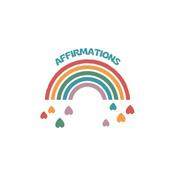485 episodes

Discomfort as Human Technology: A Brain Function Beyond Predictive Coding
2025/12/24 | 9 mins.
This story was originally published on HackerNoon at: https://hackernoon.com/discomfort-as-human-technology-a-brain-function-beyond-predictive-coding. Predictive coding explains how the brain keeps us trapped in existing frameworks. Check more stories related to programming at: https://hackernoon.com/c/programming. You can also check exclusive content about #predictive-coding, #human-brain, #predictions, #brain-science, #brain, #life-hacking, #productivity, #human-technology, and more. This story was written by: @riedriftlens. Learn more about this writer by checking @riedriftlens's about page, and for more stories, please visit hackernoon.com. Predictive coding explains how the brain keeps us trapped in existing frameworks. It does not explain how we can escape them.

The Rural Banking Stack-2
2025/12/24 | 5 mins.
This story was originally published on HackerNoon at: https://hackernoon.com/the-rural-banking-stack-2. I would like to narrate how I am conceptualizing and building an intelligent supply chain financing network which will become part of a rural bank. Check more stories related to programming at: https://hackernoon.com/c/programming. You can also check exclusive content about #payment-processing, #banking, #southeast-asia, #supply-chain-finance, #credit, #risk, #ai, #intelligent-payment-terminals, and more. This story was written by: @nxtgencode. Learn more about this writer by checking @nxtgencode's about page, and for more stories, please visit hackernoon.com. Intelligent Networks for Supply Chain Financing. An efficient network would connect the participants inside a supply chain among themselves and with an active community bank.

Is "Agentic Programming" the Next Big Shift?
2025/12/23 | 4 mins.
This story was originally published on HackerNoon at: https://hackernoon.com/is-agentic-programming-the-next-big-shift. In 2025, the developer's role is shifting from a manual "writer" to a strategic "orchestrator," managing teams of digital agents that can self-correct. Check more stories related to programming at: https://hackernoon.com/c/programming. You can also check exclusive content about #system-design, #agentic-systems, #clean-code, #autonomous-agents, #generative-ai, #ai, #ai-agentic-programming, #ai-trends, and more. This story was written by: @nikitakothari. Learn more about this writer by checking @nikitakothari's about page, and for more stories, please visit hackernoon.com. In 2025, the developer's role is shifting from a manual "writer" to a strategic "orchestrator," managing teams of digital agents that can self-correct, call external tools, and adapt to unforeseen scenarios without needing code rewrites. This "next big shift" promises faster delivery and higher operational efficiency, though it requires strict new frameworks for governance, trust, and agentic-ops.

Best Amazon Scraper APIs for 2025: Top Picks Compared
2025/12/23 | 17 mins.
This story was originally published on HackerNoon at: https://hackernoon.com/best-amazon-scraper-apis-for-2025-top-picks-compared. Compare the best Amazon Scraper APIs for 2025, analyzing speed, pricing, reliability, and features for scalable eCommerce data extraction. Check more stories related to programming at: https://hackernoon.com/c/programming. You can also check exclusive content about #web-scraping-apis-2025, #amazon-scraper-api, #ecommerce-data-extraction, #amazon-pricing-intelligence, #market-research-automation, #product-data-scraping, #oxylabs-web-scraper-api, #good-company, and more. This story was written by: @oxylabs. Learn more about this writer by checking @oxylabs's about page, and for more stories, please visit hackernoon.com. Amazon’s vast marketplace data is invaluable for pricing, marketing, and product insights—but increasingly hard to collect due to anti-bot defenses. This guide compares the best Amazon Scraper APIs for 2025, evaluating speed, reliability, pricing, and scalability to help teams choose the right solution for efficient, compliant data extraction.

Building a Decentralized Event Ticketing System Web3 with Symfony 7.4
2025/12/22 | 5 mins.
This story was originally published on HackerNoon at: https://hackernoon.com/building-a-decentralized-event-ticketing-system-web3-with-symfony-74. Build a production-ready NFT ticketing system with Symfony 7.4 and PHP 8.3 using async message queues and Ethereum JSON-RPC. Check more stories related to programming at: https://hackernoon.com/c/programming. You can also check exclusive content about #symfony, #symfony-web3-integration, #nft-ticketing-system, #asynchronous-programming, #software-architecture, #php-blockchain-development, #php-web3-backend, #ethereum-json-rpc-php, and more. This story was written by: @mattleads. Learn more about this writer by checking @mattleads's about page, and for more stories, please visit hackernoon.com. This guide shows how to build a scalable NFT-based event ticketing backend in PHP using Symfony Messenger to handle blockchain latency safely and reliably.
More Education podcasts
Trending Education podcasts
About Programming Tech Brief By HackerNoon
Listen to Programming Tech Brief By HackerNoon, The Mel Robbins Podcast and many other podcasts from around the world with the radio.net app

Get the free radio.net app
- Stations and podcasts to bookmark
- Stream via Wi-Fi or Bluetooth
- Supports Carplay & Android Auto
- Many other app features
Get the free radio.net app
- Stations and podcasts to bookmark
- Stream via Wi-Fi or Bluetooth
- Supports Carplay & Android Auto
- Many other app features


Programming Tech Brief By HackerNoon
download the app,
start listening.







































